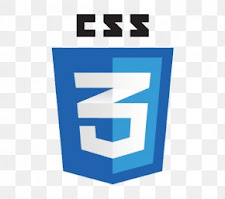After researching that which language is on
trend and which is on descend we also have discussed the pros and cons of
different languages .We have also compared them to each other to get better
outcome .according to me the beginner should start with baby steps from easy
basic language which have strong background and wide support .This helps the beginners
but no one can just stay on any one basic language because different platform
,users and system demands different language approach .
due
to this we should have multiple language knowledge if asking me what I would like develop what
is my interest , then my answer will be
simple “My interest is in robotics and
A.I,I want to design my own robot(not terminator)” anyway talking other then my interest world is also demanding
the A.I system in daily life . but A.I is in progress this will take time to
gaining the top position . Till that point we can go with language that can be
used across the different platform and going popular these days. The top five
languages that every programmer should know before jumping off to practical
life.
Python:
Nowadays
python is gaining popularity in market.
Python undoubtedly tops the list. It is widely accepted as the best
programming language to learn first. Python is a fast, easy-to-use, and
easy-to-deploy programming language that is being widely used to develop
scalable web applications. YouTube, Instagram, Pinterest are all build in Python coding.
Python
provides excellent library support and has a large developer community. The
programming language provides a great starting point for beginners. Those who are
looking for a better job should
definitely learn Python ASAP. A lot of Beginners are using Python as their
primary backend stack .
C/C++
C/C++ is like the bread and butter of
programming. Almost all low-level systems such as operating systems, file systems,
etc are written in C/C++. If someone want to be a system-level programmer,
C/C++ is the language you should learn. C++ is also widely used by competitive
programmers owing to the fact that it is extremely fast and stable.
C++ also
provides STL - Standard Template Library.
STL is a pool of ready-to-use libraries for various data structures, arithmetic
operations, and algorithms. The library support and speed of the language make
it a popular choice in the High-frequency.
JAVA
Java is
another popular choice in large organizations and it has remained so for
decades. Java is widely used for building enterprise-scale web applications.
Java is known to be extremely stable and so, many large enterprises have
adopted it. If someone looking for a development based job at a large
organization, Java is the language that you should learn.
Java is also widely
used in Android App Development.
Almost any business today needs an Android Application by the fact there are billions of Android users today.
This opens up a huge opportunity for Java developers.
Swift
Swift is the programming language that
is used to develop iOS applications. IOS-based devices are becoming
increasingly popular. Apple iPhone, for instance, has captured a significant
market share and is giving a tough competition to Android. So we should know
swift for ios based device.
Before Swift, Objective C
was the primary language for development iOS apps. In 2018, Swift got huge
popularity and became number 1 programming language for Apple and iOS operating
systems. Swift is highly recommended for creating interactive and feature-rich
tvOS, iOS and watchOS platforms.
HTML/CSS
Both
HTML and CSS are fundamental tech skills you can start using to work on real
projects within weeks of diving in. And they are the place to start if you want
to work in tech, whether you end up going into front end development, back end
development, web design, visual design, or even digital marketing. There
is a huge demand for these skills .
HTML and CSS alone aren’t enough to
get you any work in tech is a very narrow way of looking at it. So take a look
at the kind of work you can get paid to do with those two skills
HTML provides the structure while
CSS provides the style and helps them to look better and more
visually appealing. HTML is the basic
building block of an app. This language dictates the structure and contents of
a web page. The main disadvantage of HTML is that it can’t help developers make
web apps interactive. To enhance HTML pages with an aesthetic style and
interface prompts, add a design, and display all HTML elements, developers use
CSS.
HTML
language is dynamic and allows you to create a beautiful website using less
code. HTML is used to create a starting point for the website and is what most
of your static pages starting from. While CSS is the language developers
can use to style a website. The style sheet language describes how your website
is presented and its layout. CSS is used hand in hand with HTML to add colors,
backgrounds, layouts, font sizes, and more.
Detailed note on each language will be on air stay tuned















